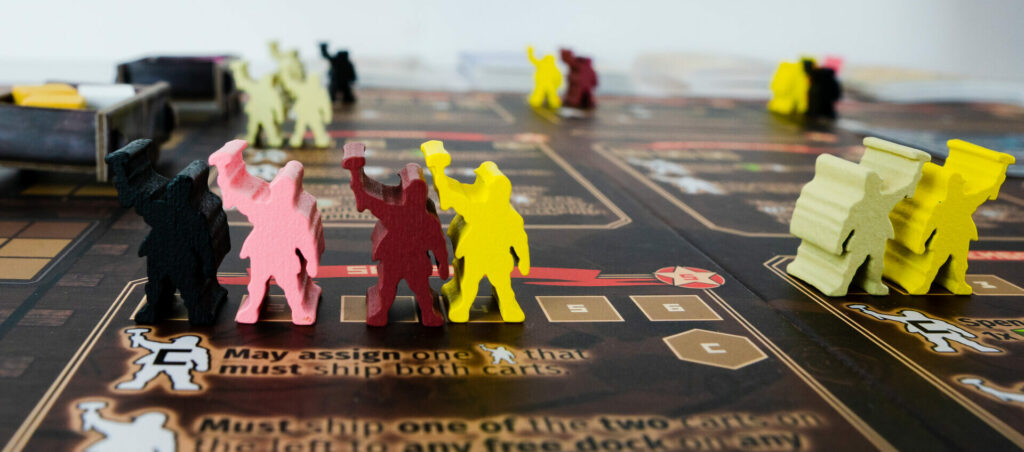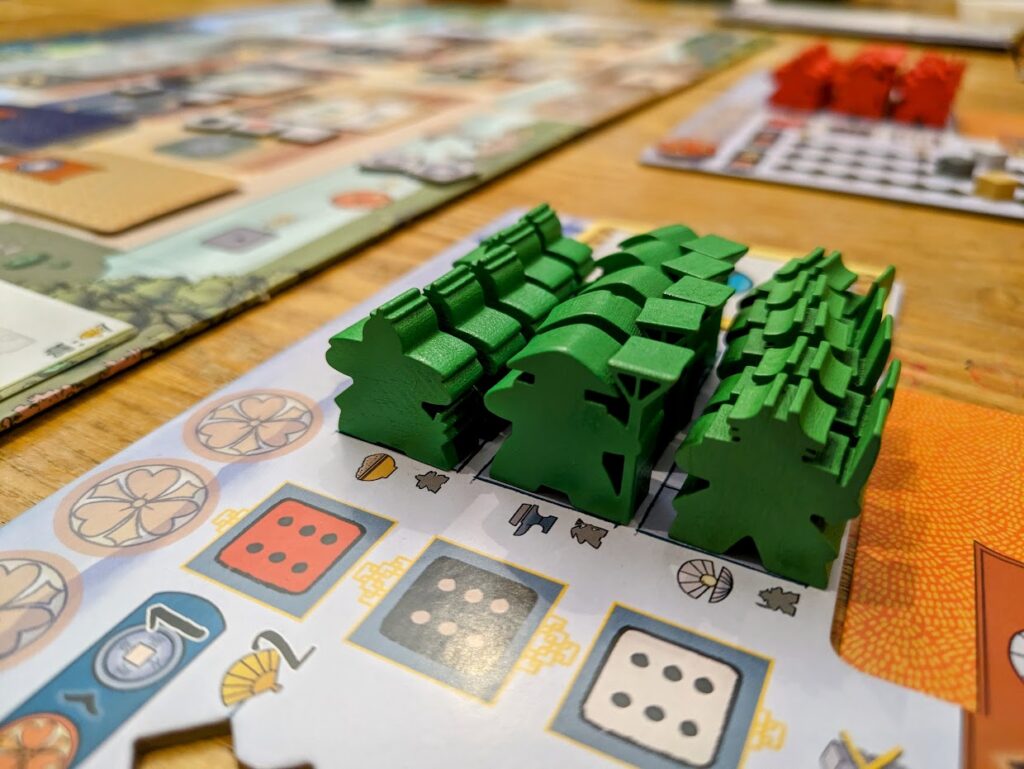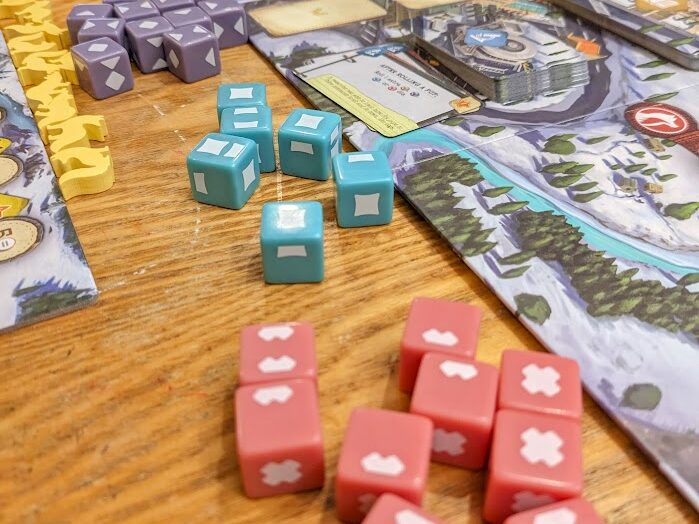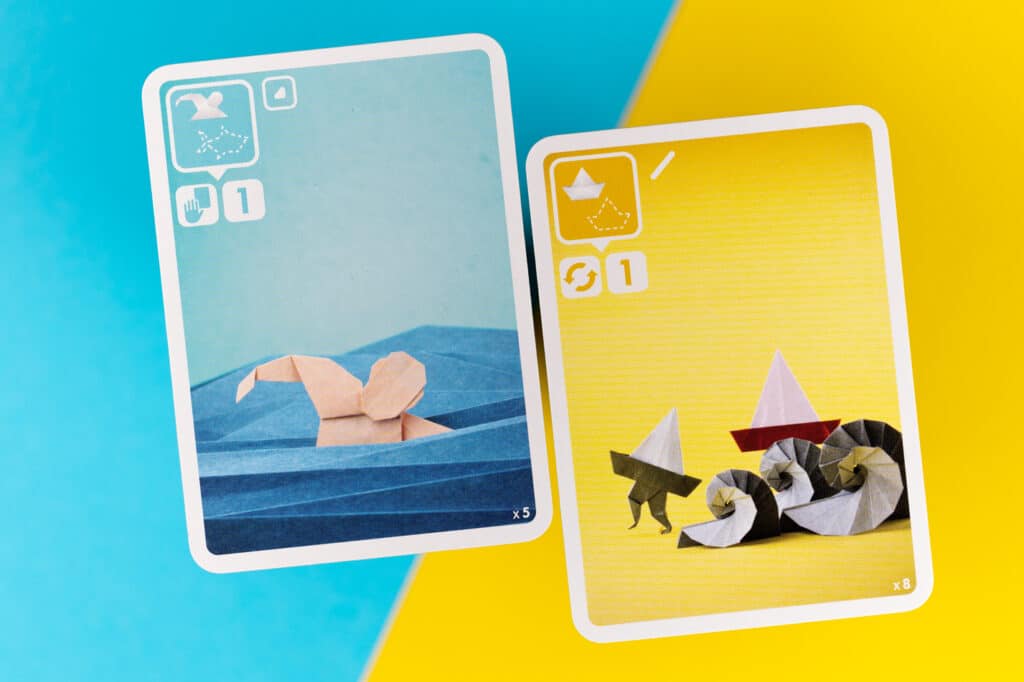That's right people, I've got my finger on the pulse and am giving you - the game-loving, hotness-buying board game players - exactly what you want. 16-year-old games that nobody talks about any more. The post Hamburgum Review appeared...
Hamburgum is a game from one of my favourite designers, Mac Gerdts. It’s a game about building huge churches in 17th Century Hamburg. It’s a game about trading, about building, about building wealth and prestige. It’s a game with some of the worst box art ever, which I have grown to love. It’s also a game which came out in 2007.
That’s right people, I’ve got my finger on the pulse and am giving you – the game-loving, hotness-buying board game players – exactly what you want. 16-year-old games that nobody talks about any more.
Writing that last sentence made me sad. People should talk about Hamburgum. People should talk about it because it was my first ‘proper’ Euro game, and they should talk about it just because I like it, because the world revolves around me and what I want. People should also talk about it because it’s a stone-cold classic example of how to use a rondel in your games. People should talk about the cutthroat church building and ever-shifting prices of sugar, beer and cloth in the game’s market.
They don’t though, thanks in no small part to another game of Mac’s called Concordia or something like that. I dunno, I never heard of it. Apparently, it’s popular though. But you’re here right now, a captive audience wondering why the hell I – someone who would like to get more eyes on his work – is devoting his precious spare time to reviewing this old game, instead of fuelling whatever hype machine is currently ploughing social media. Let’s get into it.
With bells on
Let’s start with the thing you’re most likely to stop and go slack-jawed at the first time you open the game. The components. None of your plastic minis here, nor the bog standard meeples we’ve all grown to love. No, instead we’ve got chonky, purple, wooden church pieces, teeny tiny little pieces of wood, little bricks made of actual clay, and the pièces de résistance, the little metal bells, replete with working clangers.
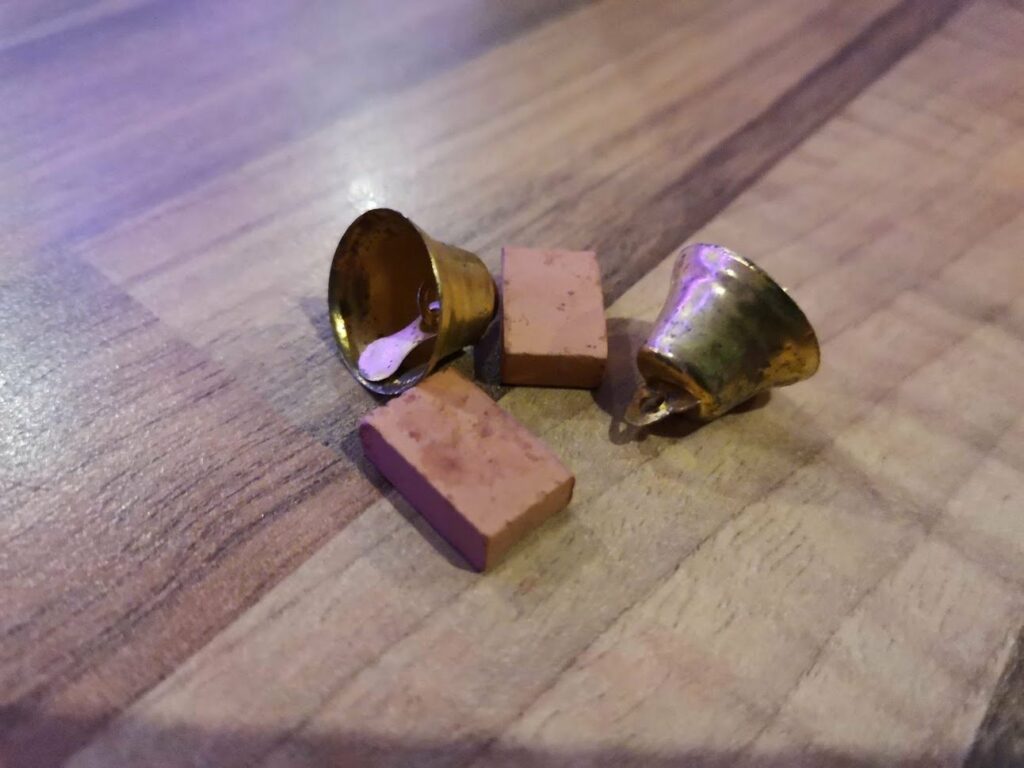 More attention to detail like these please, publishers.
More attention to detail like these please, publishers.
That’s right. Tiny little bells that jingle when you shake them. Stick that up your 2ft tall plastic Cthulhu.
When you start the game you each have some little cardboard citizen tokens and some ships, along with some starting goods and materials. Most importantly you have an octagonal piece on the rondel, and it’s this rondel, and your choices upon it, which fuels the entire game. If you’re not familiar with a rondel, it’s a (usually) circular wheel split into segments, with each segment representing one of the game’s actions. Your turn is as simple as picking up your marker and choosing whether you want to move one, two, or three spaces around the rondel, and then taking the action you land on.
It sounds so simple put like that, but the rondel is a cruel mistress, and she’ll make you question your decisions, your mind, your very sanity with every choice you make. Do you go whizzing around, taking great strides in an attempt to get back to an action you have your mind set on, or do you take baby steps, partaking of every action along the way. It’s agonisingly glorious, and once you get a taste of it you’ll likely understand why it’s my favourite mechanism in a game.
A racing Euro game? Really?
Yes. In many ways, Hamburgum is a race. The aim of the game is to get the mighty churches built, but in order to do that you need materials. How do you afford materials? You trade goods. How do you get goods to trade? You build buildings which make the goods (e.g. breweries make beer). How do you make the trades? You build boats in the docks. Everything is dependent on something else in the chain, which results in a game which is very difficult to min-max. You really need to do a bit of everything and to make sure that when you do those things, you do them as efficiently as possible. You need to do them quickly, too, as the end of the game comes when the sixth church is built.
The landscape of the game changes constantly, and there’s a lot more interaction in Hamburgum than you might be used to. You might be stockpiling sugar ready for a big payday on your next trade action, only for the players next in turn to build sugar refiners, with each new building increasing supply and reducing the price.
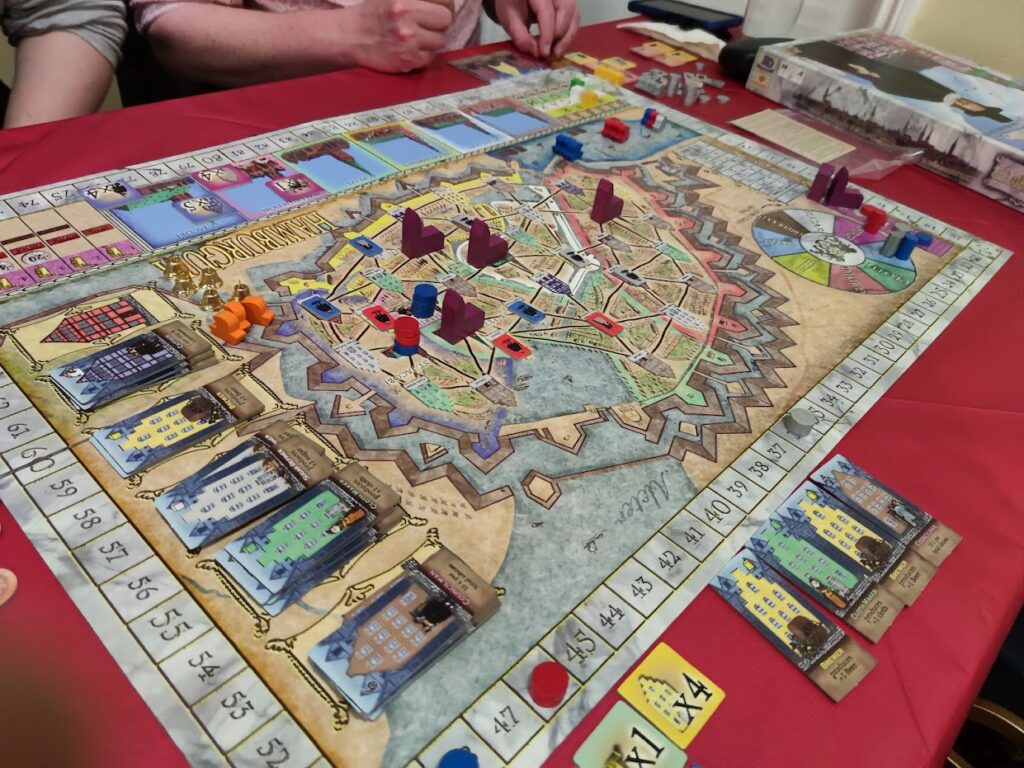 My copy of Hamburgum, mid-game at GridCon 2 in 2021.
My copy of Hamburgum, mid-game at GridCon 2 in 2021.
Being the first person to donate to a church and place one of your discs on its site nets you the big-scoring donation token, with each subsequent donation giving the donating player a choice of the tokens left. But it’s only the player topping off a church, and spending those adorable little bells in the process, who gets the big points for completing the church. It means that Hamburgum is a game where you need to keep an eye on everybody all at once. Who can finish that church you’re working on? Have they noticed they can finish it off and snatch it from your grasp? How far away on the rondel are they from the all-important church action?
Alongside all of this is a network-building mechanism to really keep things exciting. When you build new buildings you place your citizen tokens on the board, but only adjacent to either an already-placed citizen or next to a church you’ve made a donation to. It not only affects your own expansion plans, but by paying close attention to others’ networks, you can get a good idea of what their plans are limited to and can try to put a stick in the spokes of their industrial bicycles.
Stripped-back
The thing which keeps me coming back to Hamburgum year after year is because of how simple it keeps things. I remember all those years ago when I first played it, having had no experience of ‘modern’ board games, I thought there was a lot going on. A lot of stuff, a lot of cardboard. Looking back now, and comparing it to more recent games, I can see just how streamlined the game is. For a start, you don’t have a player board. You just manage a little pile of money, cubes, tiles and resources.
There aren’t a ton of cards to spawn events, choose actions, add factions, or any of that jazz. There are zero cards. There aren’t even any dice. Everything that happens in the game is driven by the rondel, by a few wooden towers processing around the wheel of actions. I’d started writing here about how things are made better by removing a load of stuff, but the reality is that Hamburgum came out before all of the ‘more, more, more’ that we get in boxes now. Would Mac Gerdts still do the same things if he were making the game now? I have no idea.
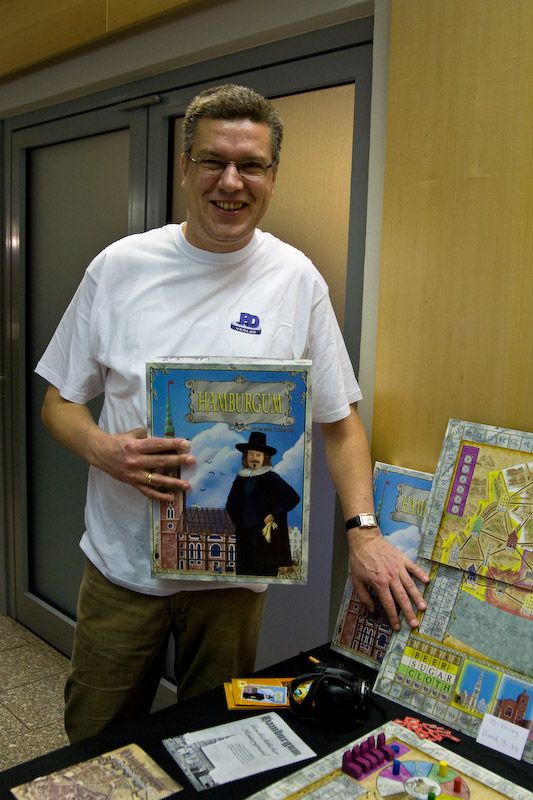 Mac with his game at Essen 2007! Photo credit: BGG User @Gonzaga
Mac with his game at Essen 2007! Photo credit: BGG User @Gonzaga
What it means to you, the player, is that if you can find yourself a copy of Hamburgum (and you can, some stores have stock) you’re going to get a game that’s easy to learn, easy to teach, and most importantly, is fun.
Final thoughts
If you’ve gotten this far in the review and still don’t know what I think about Hamburgum you either scan-read it or have no short-term memory. I love Hamburgum. Some of that fondness is sure to come from nostalgia and a reminder of my first tentative steps into the hobby, but even when I try to become a robot version of myself and remove my own feelings from things, it’s still a great game.
It’s not heavy in terms of complexity, not by any stretch of the imagination, but that doesn’t make it simple. There are a load of things all happening at the same time. Not momentous events crashing down into the game state every other turn, just small changes to the ecosystem, to the webs of networks being spun by the players, and the eternal Benny Hill chase around the rondel. Like a shark, forever swimming forward, so goes your fate upon the rondel.
Look, if you’re an old hat when it comes to board games and you never picked this up, it’s well worth getting hold of. It can hold its own against the El Grandés and Le Havres of this world, plus it’s another one of those PD Verlag games in a long, flat box, so Concordia won’t feel so odd poking out of its shelf alone. If you’ve only picked up the hobby in the last few years and enjoyed the choices that games like PARKS (review here) and Trekking Through History (review here) gave you, you’re going to like it too. Both of those games use a rondel of sorts, and you’ll soon find yourself enamoured by the bells and beautiful box art too.
Hamburgum is a bonafide classic. Keep an eye out for it at the next bring and buy you find yourself at.
If you enjoyed this review and would like to read more like this, consider supporting the site by joining my supporters’ membership at either Patreon or Ko-fi. It starts from £1 per month, offers member benefits, and lets me know you’re enjoying what I’m doing.
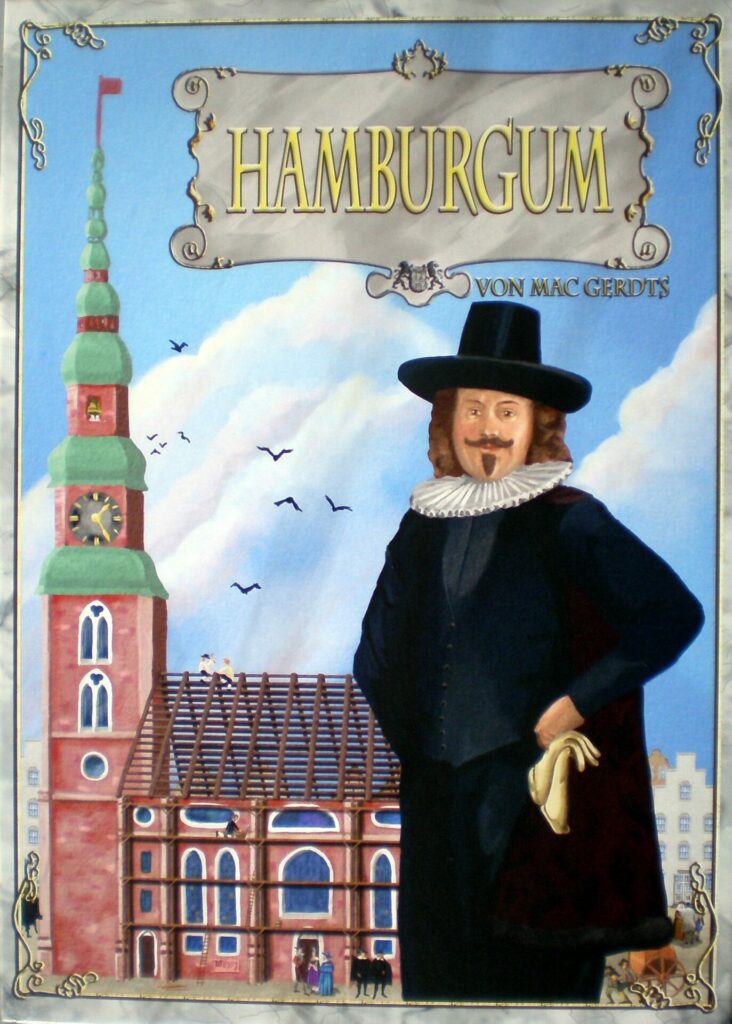
Hamburgum (2007)
Design: Mac Gerdts
Publisher: PD Verlag
Art: Matthias Catrein
Players: 2-5
Playing time: 75-90 mins
The post Hamburgum Review appeared first on Punchboard.





